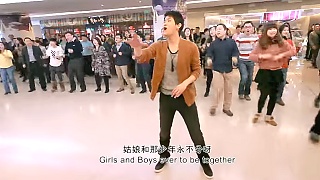Bonus films on geopolitics with The New Atlas - Brian Berletic and Angelo Giuliano ...
Related Videos
Featured Videos

|
JiangSu province.
With China Walking Tour ...
Bonus films - daytime and evening cycle tour ...
Bonus film - with FunFancie - great attractions in NanJing ...
|

|
With David Oualaalou ...
|

|
GuangZhou, GuangDong province.
China knows how to do infrastructure, and does it very well.
With Walk For You ...
Bonus film - night walk in ShenZhen : OCT OH Bay and Bay Glory ...
|

|
Including a great song ...
|

|

|
With Ben Norton ...
Bonus film - how the US captured the Philippines to use against China - with Brian Berletic ...
|

|
HangZhou ...
|

|
Visiting a few sections of the Great Wall of China near BeiJing, including 'Wild Wall' ...
|
 Jeffrey Sachs, Scott Ritter, Brian Berletic and Angelo Giuliano on Ukraine, XinJiang, Tibet and more
Jeffrey Sachs, Scott Ritter, Brian Berletic and Angelo Giuliano on Ukraine, XinJiang, Tibet and more










![`US-sponsored separatist groups, backed by Washington for decades, are being mobilized to attack and undermine activities related to the BeiJing 2022 Olympics, starting with the torch relay in Greece. I explain the background of the “Free Tibet” movement and how the US government, through the CIA, backed it as early as the 1950s and transferred its operations to the National Endowment for Democracy (NED) [or `Dominion` / enslavement]. ` With The New Atlas . . . Bonus films - terror activities by US-backed `opposition` in Myanmar . . . Bonus film 2 - subverting the `left` . . . Bonus film 3 - on Ecuador . . . Bonus film 4 - on Cambodia . . . They say : `How dare you put your face in front of my fist ! Serve your master. Or else. ` More . . . On the US plan to nuke Chinese cities - as revealed by Daniel Ellsberg, famous for the `Pentagon Papers`, with NuMuves . . . On the Falun Gong cult . . . *** Planning war on China - part 11 - don't miss it ***](https://img.youtube.com/vi/2w31eNNcGVU/mqdefault.jpg)














![With Roger Waters. Exceptional talent here. Love music; love peace ? Then you`ll love this. Know every note, or first time listen - let`s go .... . Ashes and diamonds; We are all equal, In the end. Mother, will they drop the bomb ? [hint - they did already - two different designs tested on the [`inferior`] women, children and elderly of Hiroshima and Nagasaki; among others]. Mother, should I trust the government - [no ****ing way ! Five Eyes brat pack] Mother / state / control. Only because the masses are (deliberately) distracted by TV, shopping, sex, fashion, alcohol, gambling, and more, can the tiny minority elite enslave us. It`s like a cult; part of it ? Alive, or just a robotic believer ?? A fool is one who doesn`t know what they are doing, or why they are doing it. Don`t be fooled. Bonus film 1 : Bonus film 2 - Us and Them : Or is it really just `WE` ?! Don`t believe anyone. Don`t believe any ism. Don`t even believe in truth. Truth is reality; no belief required. It`s all there to all who can see clearly, without blinkers. Something different – 100 seconds to midnight (the very end; music)](https://img.youtube.com/vi/4vu24954p4k/mqdefault.jpg)